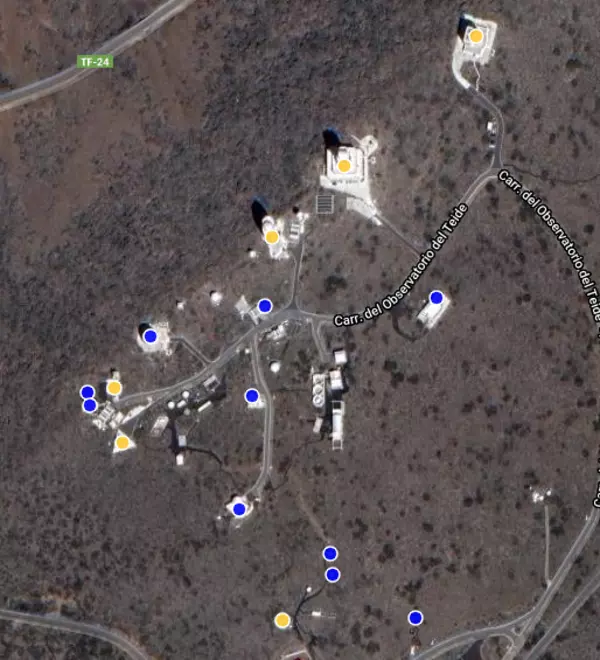
At the beginning of the 20th Century, telescopes and observatories started appearing throughout the world. Many were installed by universities so they could both teach students about astronomy and to conduct research. Often times, they were installed on the university campus. As time went on and telescopes advanced, three problems occurred.
- Light pollution started to interfere with the quality of images. The world electrified, street lamps and bright signs were installed, and the price of electricity was low. There was no thought given to conservation of energy and keeping this light from flowing to where it wasn't needed, such as up into the sky.
- Astronomers realized that their imagery would improve if they could place their telescopes as far above sea level as possible. Light from distant objects were distorted less as it passed through less of the atmosphere.
- Weather would prevent telescope usage part of the time.
Universities would move their telescopes to mountain tops to lessen these problems. That is, until mountains close to big cities also fell victim to light pollution. As astronomers wanted to peer farther into the universe, observing increasingly dim objects, minimizing light pollution and atmospheric distortions became a high priority.
In the second half of the 20th Century, many telescopes were moved to mountain tops and deserts, where the climate ensured visibility a high percentage of the time and there was a minimum of distortion from moisture. One of those mountains was Haleakalā in Hawaii, but local populations objected to modern technology encroaching on sacred places, so mountains in Chile were often used instead–as long as the view of the universe from Earth's southern hemisphere was acceptable. If it wasn't acceptable, mountain tops in the Canary Islands were an alternative.
In the 1930s, astronomers discovered that objects in the universe emitted electromagnetic energy that could be received on Earth. They built radio telescopes to receive the signals. However, man-made emissions from electrically-operated devices interfered with them, so they too were best installed in remote areas with a minimum of human activity.
These are the places in the world that tend to be best for observatories. With the exception of Greenland, they now host significant numbers of telescopes that are owned and operated by organizations in other countries:
The Big Island of Hawaii has observatories on Mauna Kea and Mauna Loa. Mauna Loa is an active volcano with a recent eruption in 2022. Mauna Kea is dormant. There are observatories on Caldera de Taburiente, La Palma and Mount Teide, Tenerife in the Canary Islands.
There are numerous location in Chile: Atacama Desert, Cerro Armazones, Cerro La Silla, Cerro Pachón, and Cerro Tololo. In Africa, most telescopes are located at the Northern Cape and Sutherland.
Summit Camp in central Greenland is the highest point of the Greenland ice sheet. It's a useful location for an observatory but getting there with tons of telescope parts is difficult.
The image below shows the telescopes on Mount Teide on the island of Tenerife in the Canary Islands. These are nominally 2,400 meters (7,874 feet) above sea level. Of the sixteen telescopes, six are solar telescopes (the yellow dots), observing our Sun.

This image shows twenty telescopes along a ridge on Cerro La Silla, Chile. All of the telescopes are optical telescopes except one, which is a radio telescope.

This photo shows some of the radio telescope dishes on Mauna Kea on the island of Hawaii.

Non-light observations
Solar observatories can be located almost anywhere, whereas observatories measuring neutrinos are thousands of meters below ground or underwater. Old mines under mountains are frequently used.
Locations for observing gravitational waves don't need high altitudes and aren't affected by the atmosphere.